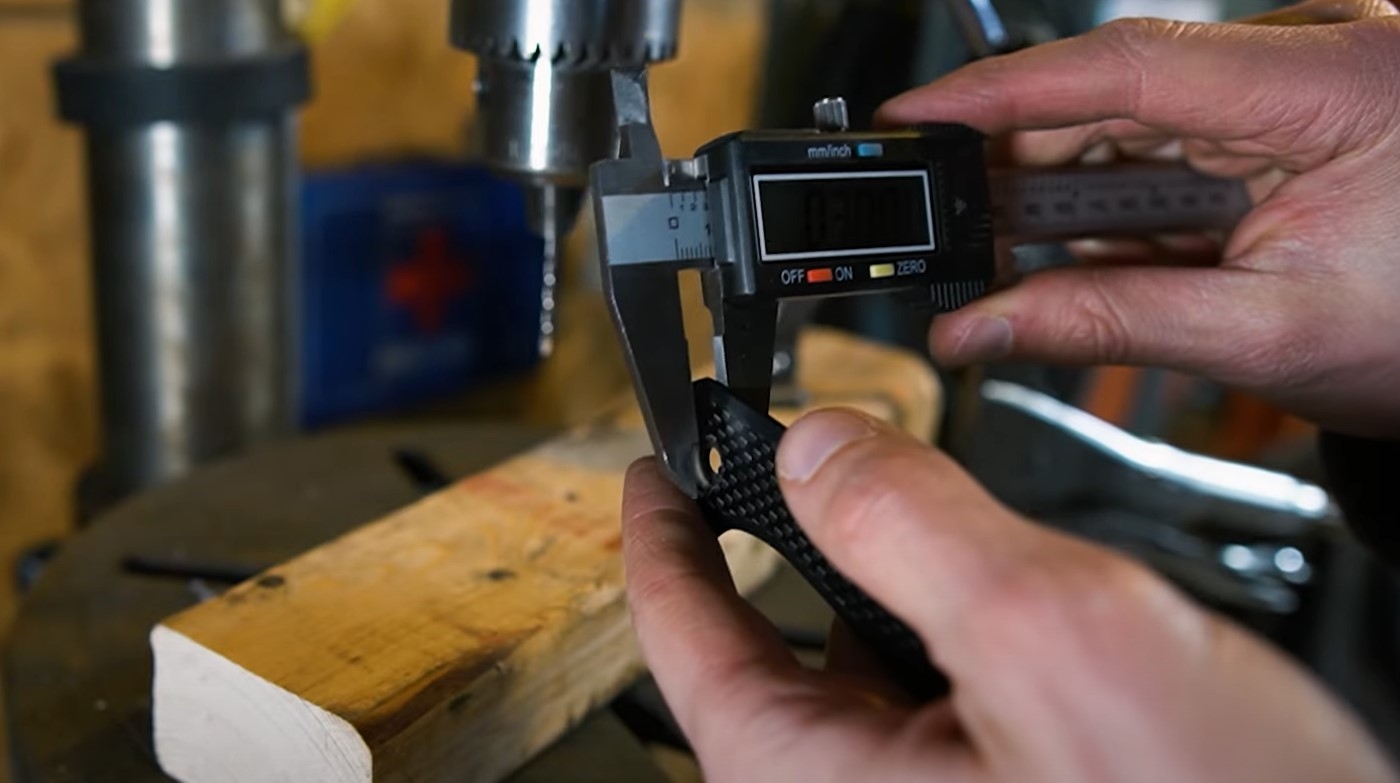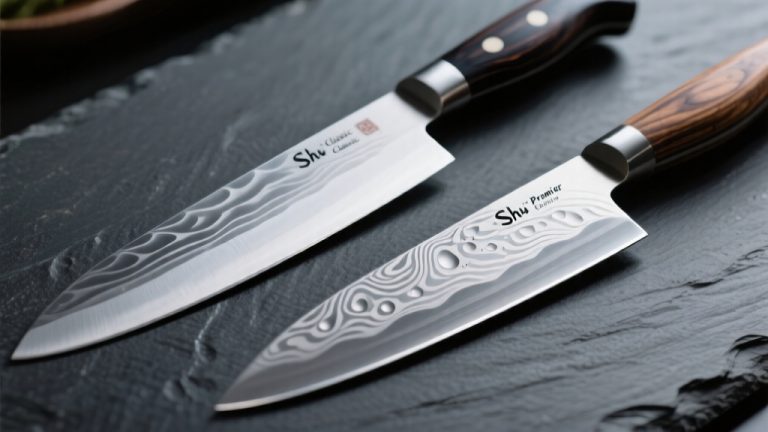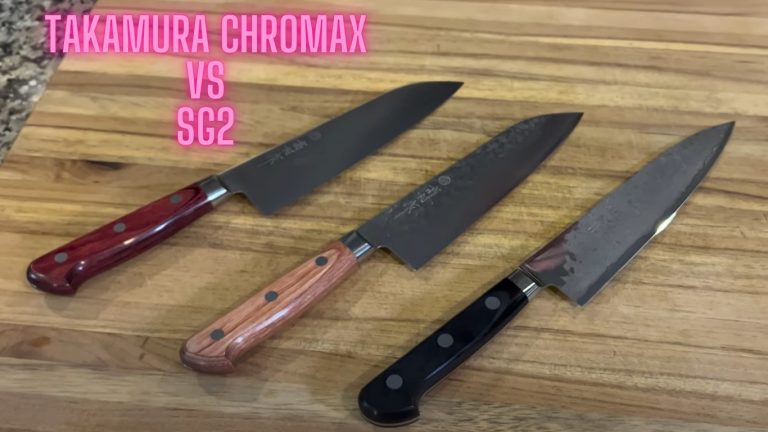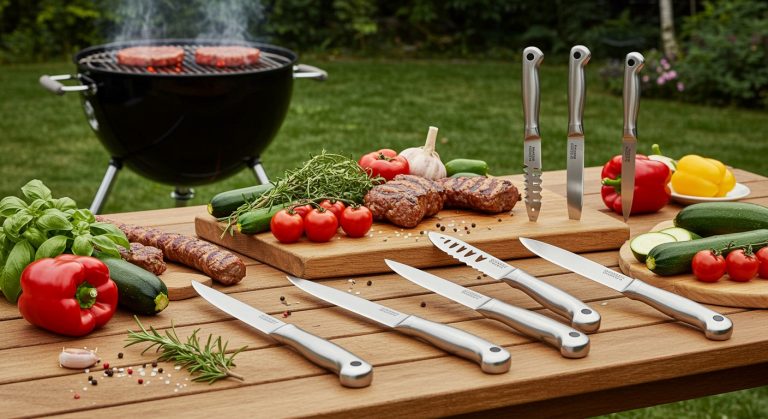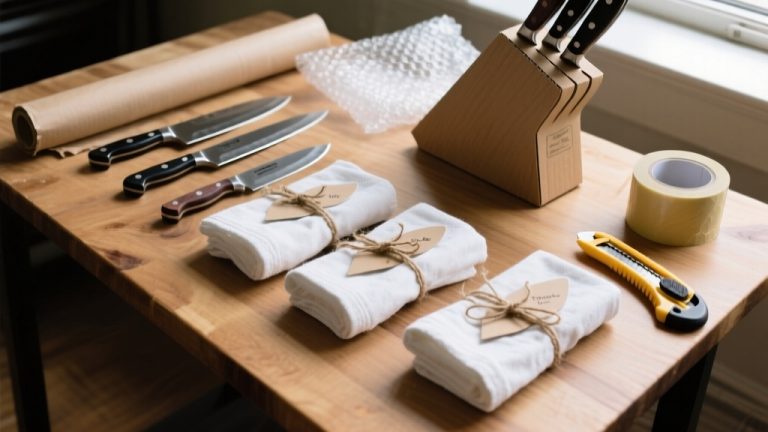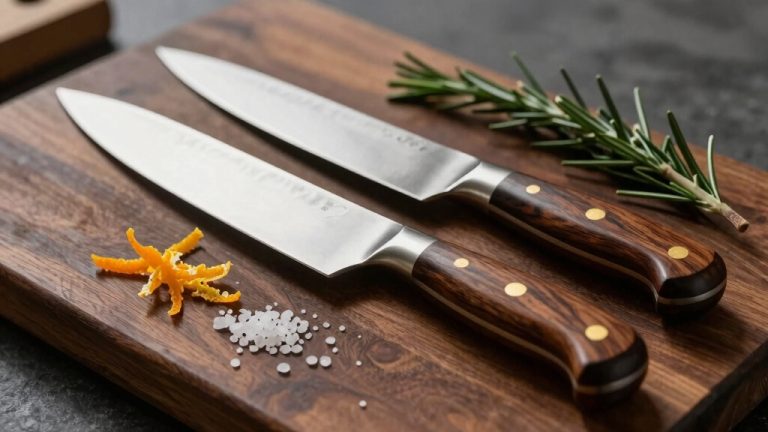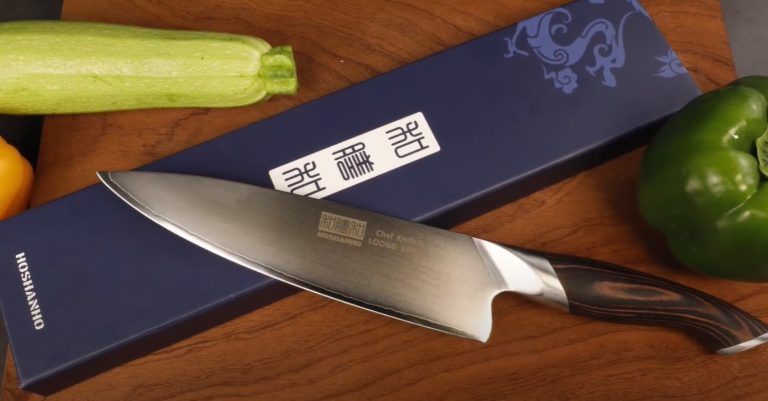What Are Knife Scales: Perfecting Grip, Durability and Style
Knife scales are the handle components of a knife, affixed to the tang for improved ergonomics and aesthetics.
They provide a comfortable grip while protecting the tang, enhancing the knife’s durability. You can choose from a variety of materials like wood, metals, and synthetic composites, each affecting grip and style.
Depending on your preferences, knife scales can be customized to reflect your personality and needs. Explore the different types of materials used to create the perfect scales for your knife.
Key Takeaways
- Knife scales are handle components attached to the tang, enhancing grip comfort and aesthetics.
- They protect the tang and contribute to the knife’s overall durability.
- Common materials for scales include wood, metal, and synthetic options like G-10 and Micarta.
- Knife scales can be customized to reflect personal style and preferences.
- The manufacturing process involves cutting, shaping, and securing the scales to the blade.
Definition and Purpose of Knife Scales
Knife scales are essential components of a knife’s handle, directly affixed to the tang to provide structural integrity and functionality.
These separate panels enhance both the ergonomics and aesthetics of your knife, ensuring a comfortable grip during use. By protecting the tang, scales considerably contribute to the knife’s overall durability. Knife scales can be made from a variety of materials, each offering different benefits and aesthetics.
Knife scales improve ergonomics and aesthetics, ensuring a comfortable grip while enhancing durability by protecting the tang.
You can customize or change scales to suit specific applications, reflecting your personal preferences and style. The choice of scale material can greatly influence grip comfort and slip resistance, affecting your knife handling experience.
Common Materials Used for Knife Scales
When it comes to selecting knife scales, the material choice plays a crucial role in both functionality and aesthetics. Metals like aluminum, titanium, and stainless steel offer durability and resistance to corrosion, making them ideal for various applications.
Common metals for knife handles provide varying strengths and weights, catering to different preferences. If you prefer a classic look, brass and bronze provide vintage appeal.
Wood scales, from oak to exotic species like ebony, bring warmth and character, while stabilized wood enhances durability.
You might also consider bone, horn, or antler for unique textures and appearances. For modern options, G-10 and Micarta composites deliver exceptional grip and strength.
Types of Synthetic Materials
While exploring the domain of synthetic materials for knife scales, you’ll discover a diverse array of options that combine functionality and innovation. Carbon fiber stands out for its lightweight yet durable nature, ideal for high-end knives.
G10 offers exceptional strength and water resistance, available in various colors and textures for customization. Glass-Reinforced Nylon (GRN) balances durability with cost-effectiveness, while Micarta boasts strength and chemical resistance, making it a popular choice.
Zytel, a proprietary blend, provides impressive durability and impact resistance. Each material caters to different needs, whether you’re looking for a tactical, survival, or everyday carry knife.
With these synthetic materials, you can achieve both performance and unique aesthetics in your knife designs, as synthetic materials are designed for durability to enhance usability in extreme conditions.
Types of Natural Materials
Natural materials for knife scales offer a blend of aesthetic appeal and functional qualities that synthetic alternatives often can’t match. From the unique patterns of wood to the durability of bone, each material brings distinct advantages. Here’s a quick overview of some popular natural materials:
| Material | Characteristics |
|---|---|
| Blackwood | Durable, eco-friendlier than ebony |
| Cocobolo | Multicolored, hard, visually stunning |
| Desert Ironwood | Rare, highly prized for pattern |
| Bone | Lightweight, traditional aesthetic |
| Antler | Durable, natural look |
Manufacturing and Assembly of Knife Scales
The process of manufacturing and assembling knife scales involves meticulous attention to detail, ensuring that each component meets stringent quality standards.
You’ll start with material selection, choosing wood, metal, or synthetic materials based on durability and aesthetics. Using trim saws, you cut and shape the scales to fit the knife’s tang.
Precise drilling for pins secures the scales to the blade, followed by careful grinding for a snug fit. Additionally, custom knife handle making is a popular project that emphasizes the importance of following shop rules.
After applying epoxy, you’ll pin and align the scales, using clamps while the epoxy cures. Don’t forget to clean up any excess epoxy before it dries.
Pin and align the scales with clamps after applying epoxy, ensuring to clean any excess before it sets.
Frequently Asked Questions
How Do Knife Scales Affect the Knife’s Overall Balance?
Knife scales greatly affect your knife’s overall balance by altering weight distribution.
When you choose a heavier material, like titanium or stainless steel, you’ll notice increased durability but also a shift in the balance point, often making the handle feel more substantial.
This can enhance grip comfort and control.
Ultimately, selecting the right material lets you tailor the knife’s ergonomics to better suit your specific tasks and preferences, improving cutting efficiency and safety.
Can Knife Scales Be Replaced or Customized Easily?
Think of your knife as a canvas; the scales are the vibrant colors that bring it to life.
Yes, you can replace or customize knife scales relatively easily, especially with the right tools. By removing the old scales and carefully attaching new ones, you enhance both aesthetics and grip.
Whether you choose wood, metal, or exotic materials, personalizing your knife not only improves its look but can also elevate its overall performance.
What Maintenance Do Different Materials Require?
Different materials require varying maintenance.
For wooden scales, you’ll need to oil them regularly and sand for a smooth finish.
Metal scales need cleaning with mild soap and must be dried promptly to avoid rust.
Synthetic materials like G10 and Micarta require occasional cleaning but are low-maintenance.
Bone and antler scales also need oiling, similar to wood.
Always store your knife properly to prolong the life of your materials and maintain their appearance.
How Do Temperature Changes Affect Knife Scale Materials?
Temperature changes can greatly impact knife scale materials.
In low temperatures, you might notice moisture freezing, causing wood or bone to crack, while metal scales could experience fatigue.
Conversely, high temperatures can lead to thermal expansion in metal, degrading synthetic materials and weakening adhesives.
To mitigate these effects, select temperature-resistant materials, maintain regular lubrication, and store your knife properly to guarantee longevity and performance during temperature fluctuations.
Are There Any Safety Concerns With Certain Knife Scale Materials?
Imagine you’re in a high-stakes kitchen showdown. Safety concerns with knife scale materials are real.
Some materials, like G10, might carry cancer warnings, especially with prolonged contact. Stainless steel can be slippery, increasing accident risks if not textured properly. Aluminum conducts electricity, posing hazards in specific environments.
You should regularly inspect your knife scales for damage and clean them to maintain hygiene. Always prioritize safe handling to avoid injuries while cooking or crafting.
Mastering the Art of Knife Scales: Where Function Meets Style
In crafting a knife, scales are more than just handles; they’re the heartbeat of the blade, influencing both function and aesthetics.
Whether you prefer the warmth of wood or the resilience of synthetic materials, choosing the right scales can elevate your knife from ordinary to extraordinary.
So, as you explore the world of knife scales, remember: it’s not just about holding a tool; it’s about mastering an art that reflects your personal style and purpose.

